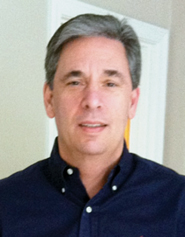Matt Senecal is head of business development for electronic trading at UBS. Tony Amicangioli is a founder, president and chief executive at technology vendor Hyannis Port Research. The two companies recently entered into a partnership to make Hyannis Port’s risk management software available to UBS’s high-frequency black box customers. Both executives believe that such speedy technology will become more ubiquitous in the future, leveling the playing field for certain institutional customers. Traders Magazine caught up with Senecal and Amicangioli recently.

Traders Magazine: High-frequency trading for the masses?
Amicangioli: HPR believes very strongly in the next one to five years there will a commoditization of low latency technology. A recent Tabb piece notes the difficulty HFT-only shops will face trying to make money on performance only strategies. They’re in a race to achieving nearly zero gain in alpha.
Traders Magazine: So less expensive technology will lead to it becoming more widely available?
Amicangioli: Like any technology, it is initially available to the top players. But over time it tends to become more ubiquitous. We believe that some of the larger ultra-low-latency-centric funds will start to look more like traditional hedge funds and vice versa. The traditional hedge funds are increasingly asking about high performance, low latency capabilities while our information suggests the latency-centric shops are recognizing the need to diversify beyond latency-only strategies.

Senecal: If you look back five years ago very few of the brokers had their smart order routers or algo engines co-located in a data center. And now virtually everybody—certainly the Tier 1 brokers—does. That’s the new normal. You want to be as close to the matching engine as possible when making your trading decision.
Traders Magazine: Quantitative money managers are next in line?
Amicangioli: Hedge funds are increasingly realizing that efficiency is everything. A year ago, when we spoke to hedge funds, they would say: ‘I don’t really care about this low latency stuff. I can just buy the VWAP, and that’s okay.’ Now they’re looking at the sum total of the trades they do over a year and coming to the conclusion that every nickel counts. ‘If I can’t interact with the market microstructure the way these high-frequency traders do, I’m at a disadvantage. I’m paying more to trade.’
Traders Magazine: You suggested it might also be a competitive necessity.
Amicangioli: So the traditional quant hedge funds are definitely asking about low latency. And we’re also hearing that they are increasingly finding portfolio managers who have hybrid strategies that depend on low latency in order to interact with the market microstructure while integrating other, less performance sensitive techniques. So there are portfolio managers they want to hire but can’t because they don’t have the infrastructure to support them.
Traders Magazine: So, the race for lowest latency is still going on?
Senecal: That may be the end product, but the point is that technology continues to enhance the efficiency of the market. As you can get market data faster, you can make a trading decision faster. And if you can make that trading decision faster then you need to be able to get to the market faster in order to capture that price that you processed. So the whole trade decision—in the quant space anyway—is really about removing inefficiency. Technology has always—since at least the days that Nasdaq provided an alternative market—removed those inefficiencies. And we are getting down to such low levels of inefficiency—at least from a latency standpoint—that it is becoming more difficult to remove them.
Amicangioli: The “race” continues, but like many races there will be a limit. My experience tells me the limit will be the speed of devices bound by progress in device physics. Think about your desktop PC. The fastest box you can buy is approximately three gigahertz. In the next five years, that won’t change as much as it did in the past. That is happening here too. It’s going to level out. It’s actually not a race to zero. It’s a race to a new normal. To a level playing field.
Senecal: Exactly. It levels the playing field for the quantitative buyside client. Where previously what we call high-frequency firms had the advantage, now everybody is on the same level playing field.




